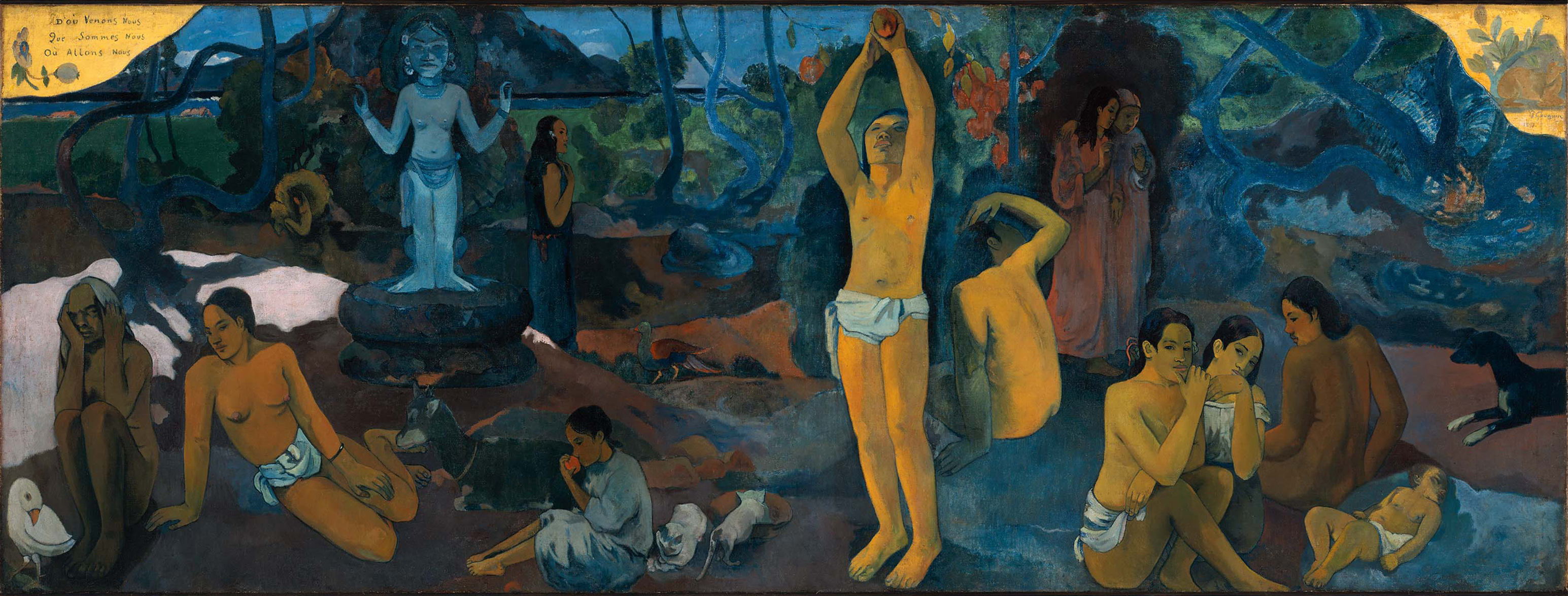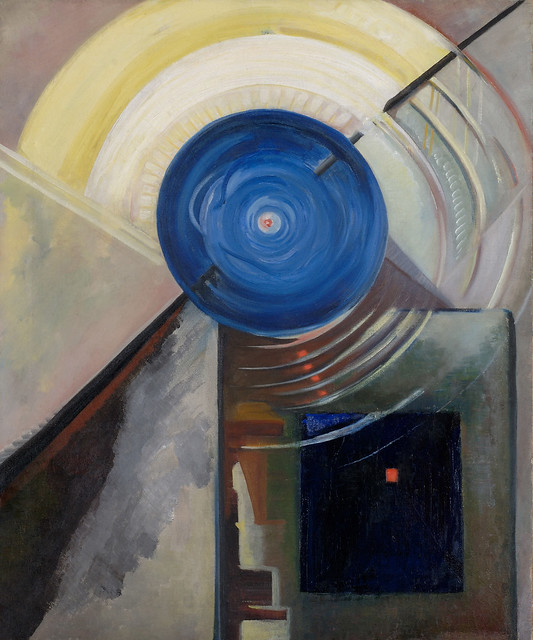Where Do We Come From? What Are We? Where Are We Going?
7:00 AM |
| Paul Gauguin, Where Do We Come From? What Are We? Where Are We Going?, 1897 |
By ROSIE PASQUALINI
*FACT*
True Emotion is teenage angst dressed up in fancy shoes and a tuxedo.
*A DESCRIPTION OF MY CURRENT STATE*
It is called Missouri. That’s pronounced Misery if you are a hater (read: from Kansas). It is sort of big and full of interesting things.
*A DESCRIPTION OF MY CURRENT STATE OF MIND*
I am seventeen years old. I am an elderly child, or an extremely young adult. I am about to enter what some call The Real World and what others call Another Phase of Your Life From Which You Will Emerge with the Stark Realization that You Still Don’t Know Anything About Anything. I have been taught to learn what I can, to arm myself with truth, to let my id drown in the deep end of my mind where the unspeakable flows edgelessly through itself, making waves, held back by the tidal pull of rational thought.
It is difficult.
We all know this. It is difficult to be the Earth and the moon and the architect of both their orbits. I have been told that there are answers. Progress. I have believed; I still believe. There is no other way to be. But why learn? Why try to be good? (Because that is the crux of knowledge: Practicing right and wrong. Not knowing the difference; you already know the difference. Seeing each time that there is a choice.)
I remember the first time I hurt someone. I made the wrong choice on purpose and it was kind of exciting, like a child’s first taste of the ocean. Waddling through slimy seaweed, cringing with tiny toes, and fwoosh there’s a wave. It fills the mouth with happy spluttering. We say sin is subjective. It’s not. Sin is that saline twinge that grows in the back of your throat when you mess up. Pecado in Spanish; pescado is fish; the nourishing s removed. (Works in French too. Péché means sin. pêcher means “to fish.” There’s something fishy going on here.) The first time I was consciously an asshole, my mind started powerhigh, then grew lukewarm with the first curdles of guilt. You know how it goes. There is no singular me or you; there are parts. Always fighting each other. All of me trying to win. And it’s not like I can get away. Not even for an instant. Wherever I go, I’m still there, with this or that part waiting to take over.
It is difficult. But I’m glad that I love people or whatever. I’m glad that I want to do the right thing. It’s worth it-- about 99% of the time.
*A DESCRIPTION OF HOW I INTERACT WITH THOSE WHO HAVE WITNESSED THE OTHER ONE PERCENT, OR WHOSE ONE PERCENT I HAVE WITNESSED*
An instantly regrettable and very hovery hug, like holding a ghost. That moment of reckoning when you realize that nobody really knows anybody. An insoluble loneliness. Strangers again. Ab aeterno, ad infinitum. Look, blink, smile. Repeat after me:
“Where do we come from? What are we? Where are we going?”
*FACT*
True Emotion is teenage angst dressed up in fancy shoes and a tuxedo.
...Or, in Gauguin’s case, clothed in fearless but clean-edged spats of color.
*WHERE DO WE COME FROM?*
Paul Gauguin learned to paint and think at a school called Le Petit Séminaire, which he attended from the ages of eleven through sixteen. His favorite teacher, a Monsieur Dupanloup (literal translation: Mister of the Wolf Bread), had young Paul consider three ideas as the basis of his education: Where does humanity come from? Where is it going? How does humanity proceed?
In case you’re thinking your formative years won’t matter that much in the long run, consider this: Mr. Wolfbread’s questions became the philosophical guts of what Gauguin called his “most important work in the history of ever-- like seriously, y’all, I’m delaying my suicide to finish this, so you’d better pay attention.” That is an actual Gauguin quote, obviously. And his magnum opus-- D’où venons-nous? Que sommes-nous? Où allons-nous?-- must have exceeded even Gauguin’s own expectations, because he chose to keep living (and then died of syphilis).
If you ever start to worry whether art is important, just remember: Your creative instincts may one day save your life. Or perhaps they already have. The next time you walk around in your own head, note the safety net of possibility between You and The Abyss. Then keep walking right along before that stuff starts staring back.
*WHAT ARE WE?*
The piece itself is hard to interpret creatively because Gauguin made its meaning clear from the get-go. It is intended to be read from right to left. As its figures age, we progress through Gauguin’s questions. No answers appear forthcoming save the slow decay of aging. The blue idol in the background represents what Gauguin called the Beyond. The white bird in the left-hand corner symbolizes the futility of words in the description of certain thoughts, an idea I yearn to reject but simultaneously sympathize with. Unsurprisingly, this painting was and is critiqued for being too obscure. But Gauguin didn’t expect people to “get it,” just as he didn’t expect people to “get” his so-called madness. All symbolism aside, one cannot help but feel shivery at this smorgasbord of resplendent colors. And before reading the painter’s alleged explanation, the combination of his work’s in-your-face title and its models, young and old, all female, made me consider all the different me’s tramping through my mind.
In a Conradian turn of events, Gauguin left European society and went to live in Tahiti to explore the “primitive” parts of his own morality. Gauguin is a highly controversial figure (read: potential pedophile, pretty damn racist) and the value of his art is often contested for this very reason. However, I sympathize with his quest to mine his personal heart of darkness; it takes a certain nerve to delve into that one percent, to face the parts of yourself you ought to be afraid of.
*WHERE ARE WE GOING?*
Growing up, then, means finding the right shoes and tux for your angst to wear.
Is this progress? Maybe.
Is it important? Yes.
Look. Blink. Smile.
Repeat after me.










0 comments